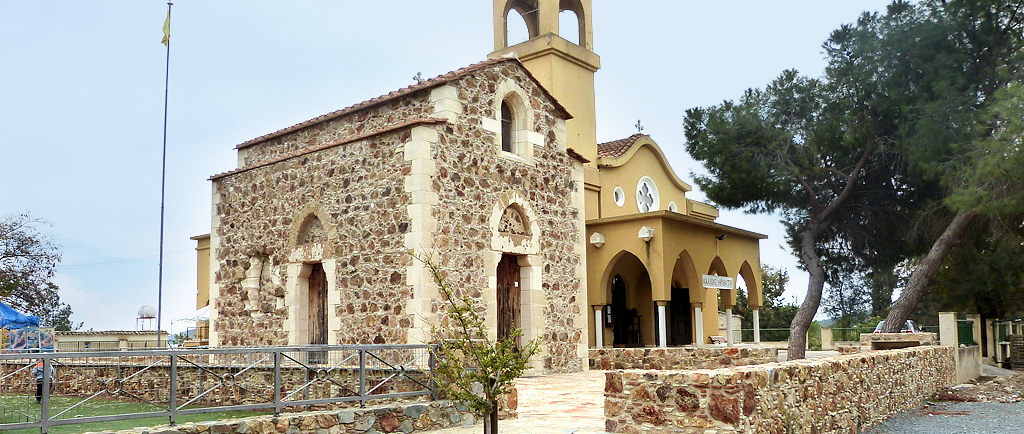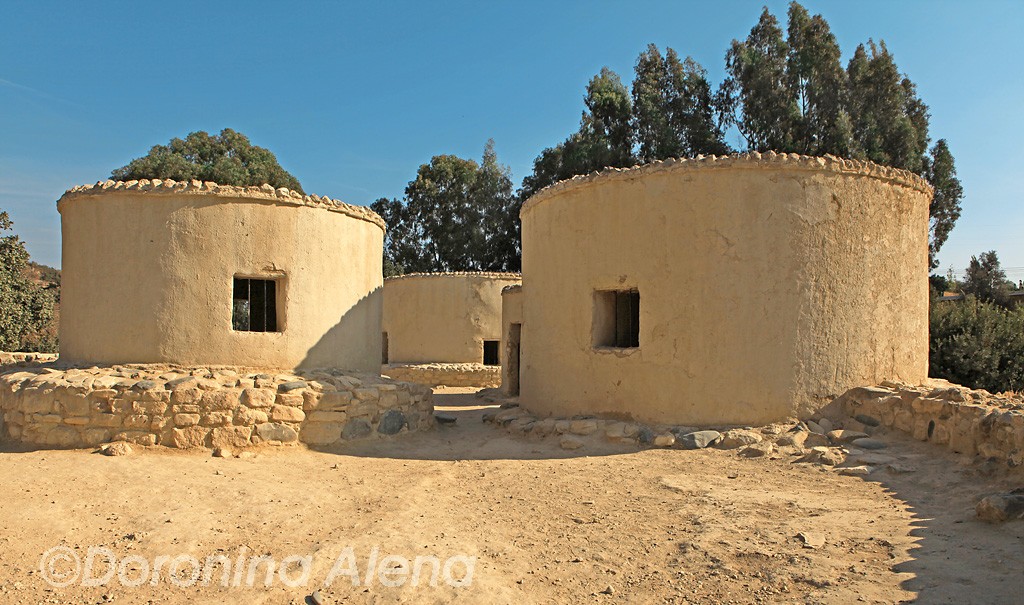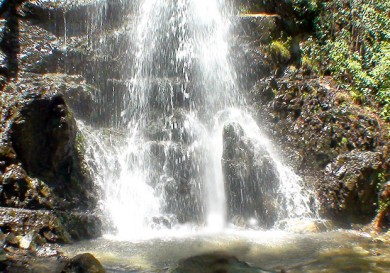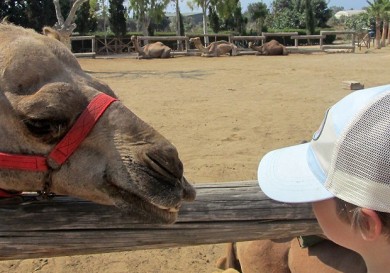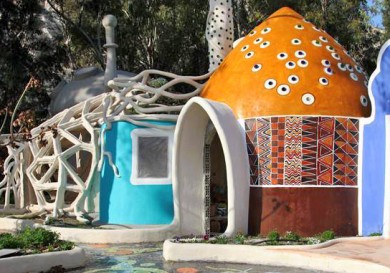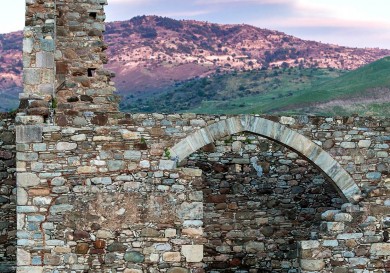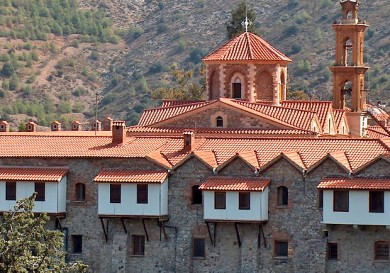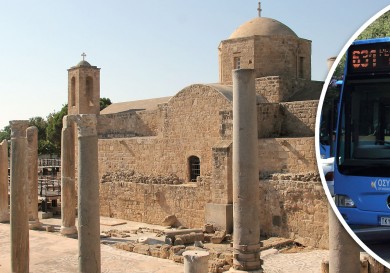I have been living in Cyprus for quite a long time, but the deep religious commitment of the Cypriots is still a mystery to me.
How did Greek Cypriots manage to preserve the Christian traditions so carefully, passing them from generation to generation whilst being under the oppression of the Ottoman Empire for several centuries, and later under the influence of Catholic England? Religious traditions are so much interwoven with their everyday life that there can be no doubting their sincerity.
Baking the Phanouropita cake, asking for help from saint Phanourius when something is lost, or dropping into the Monastery of Saint Thekla the Healer to pray and make use of the therapeutic mud when ailing, is an ordinary thing.
I’ve known about the Monastery of Saint Thekla for a long time and have been there several times, while it was my Cypriot friend Mariya who invited me for my first visit to the Monastery of Saint Menas. Mariya’s family has a custom of taking a car ride to visit small villages and this or that monastery or church on weekends.
Since there are a great number of them in Cyprus, the route can be different each time. Being aware of my interest in Cypriot traditions, Маriya organised our Sunday journey with great enthusiasm.
Along the Old Road
We left Larnaca in the direction of Nicosia. We didn’t take a high-speed road, but turned from a roundabout onto an old road marked as Е104 on road maps.
The effect was as if we had used the underground all the time and decided to use surface transport all of a sudden. The quality of the road is no worse than a main road, like any other secondary road in Cyprus, but there are many more impressions and pleasures from driving along it – small, neat villages flow by, and you can stop in any place you like without any problems, take a couple of memorable photos and buy homemade sweets from locals.
 Just such a stop we made in the village of Аyia-Аnna. It struck me immediately that the facades of houses, fences and a small church are done with the same limestone.
Just such a stop we made in the village of Аyia-Аnna. It struck me immediately that the facades of houses, fences and a small church are done with the same limestone.
Маriya explained it to me – the stone is mined not far from the village and so is typical of all constructions in the village. It creates architectural unity and the possibility of keeping the image of the village in its original condition.
We should note here that Cypriots really try to maintain things of cultural value and reflect their historical traditions.
In many mountainous villages, such as Lefkara, Каkopetria, Fikardou, the architectural overseeing service, strictly controls the number of storeys, the size of windows and door frames and the use of certain construction materials.
But the main sight of the small village, according to Маriya, is a tavern with a homonymous name. In the summer it is very popular. Not only the inhabitants of adjacent villages come here, but also visitors from Larnaca and Nicosia. It’s best to book a table during the summer as the tavern can get very busy, but in winter the flow of customers is not so great, and the tavern closes down.
Visiting Saint Thekla
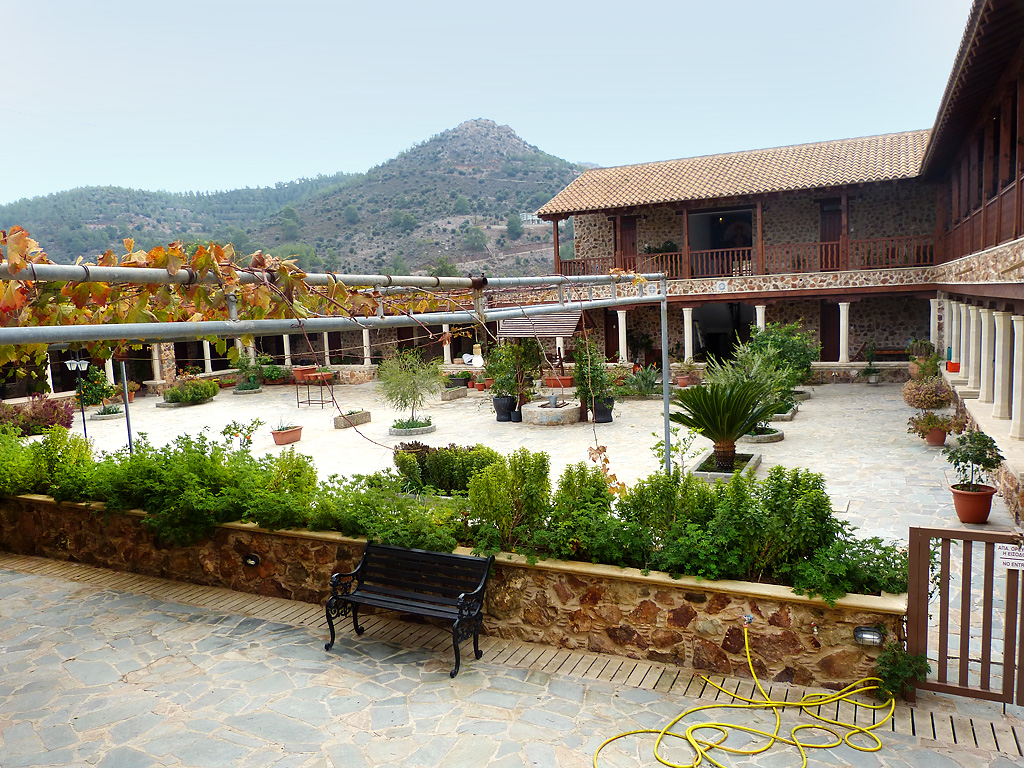 We are moving further and when we reach the Mosfilioti village, we follow the signs and turn right. We soon stop at a seemingly inconspicuous building. This is the Monastery of Saint Thekla the Healer.
We are moving further and when we reach the Mosfilioti village, we follow the signs and turn right. We soon stop at a seemingly inconspicuous building. This is the Monastery of Saint Thekla the Healer.
The story of Saint Thekla is widely known. Being a daughter of affluent parents, she once heard a sermon of the Apostle, Paul. The words of the great preacher touched the soul of the girl deeply. Thekla decided to abandon her husband and all worldly goods and devote herself to the service of God. She cured people and helped them gain faith until she was very old.
And now, when coming to them Monastery, the parishioners first of all ask Saint Thekla for health for themselves and their family.
When we open the door, we enter a small yard full of greenery. You can see the entrance to the church in front of you аnd pictures of those who were cured after visiting the Monastery are attached to the left.
The Monastery was first erected in the 15th century after a healing spring had been discovered on the site. The monastery has been demolished and rebuilt several times over the years.
The current construction is quite new – it was in 1956 that the healing springs were in use again and the monastery was rebuilt by the nuns.
Today Cypriots and pilgrims from all over the world come to the healing springs to take holy water and the therapeutic mud. Local old timers say that the mud helps cure many skin problems. After buying a pack of my favourite rose petal tea in a shop under the monastery and saying goodbye to the nuns, we went further.
Please note that the Monastery is open for visits from 06:00 to 12:00 and from 15:00 tо 19:00.
On the Way to the Monastery of Saint Menas
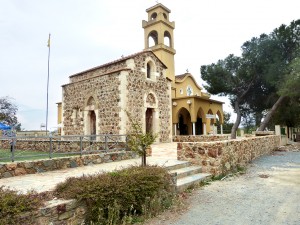 To get to the Monastery of Saint Menas, we had to pass another three villages — Коrnоs, Lefkara and Vavla. You can get to Kornos after turning from Mosfilioti to the right, but we turned back a little and went to Kornos through the village of Pirga, where a chapel, built in 1421 on the orders of King Jean de Lusignan, is preserved.
To get to the Monastery of Saint Menas, we had to pass another three villages — Коrnоs, Lefkara and Vavla. You can get to Kornos after turning from Mosfilioti to the right, but we turned back a little and went to Kornos through the village of Pirga, where a chapel, built in 1421 on the orders of King Jean de Lusignan, is preserved.
If you ask the caretaker you can see the inside of the chapel for a small fee. Time, unfortunately, did not spare the ancient murals on the chapel walls.
After passing Коrnоs, we stopped for a short while to have coffee and a snack in Lefkara. I think that wine lovers would be interested in dropping into the Dafermou winery, which is located on the way from Lefkara to Vavla, and try the local wine.
Near to Vavla village, we followed the signpost and turned left and reached the final point of our trip. We know that Saint Menas was born in Egypt and served in a legion during the Roman Empire. After adopting Christianity, he never concealed his faith. In the period of the persecution of Christians, the brave soldier did not renounce his faith, even under torture, and he died a painful death.
The Monks of the Monastery of Saint Menas used to make butter and there were also craft shops. Now it’s a Convent, but strict monastery rules are still adhered to. Visitors must stick to the rules too – women who come in trousers must tie skirts over the top.
We visited the Monastery at the end of Dеcember, and the air was full of the heavenly smell of freshly harvested olives, boxes of which stood all around the small yard. Apart from olives, the nuns collect citrus fruit and gather healing herbs.
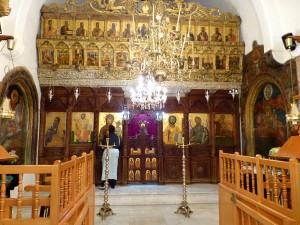 On Sundays the parishioners may sit on the terrace of the Monastery – everyone is treated to coffee with homemade sweets. Don’t you agree that there is something comforting and warm in it, which prompts you to come to the God’s house not only in times of need but in good times too?
On Sundays the parishioners may sit on the terrace of the Monastery – everyone is treated to coffee with homemade sweets. Don’t you agree that there is something comforting and warm in it, which prompts you to come to the God’s house not only in times of need but in good times too?
In the church there is an icon of Saint Menas painted by Filaret, the painter of many icons in Cyprus. Don’t forget to take a cotton ball with blessed olive oil behind the door at the entrance to the church.
The Monastery also used to have a healing spring, and although the nuns say it has not produced water for a long time, Cypriots still come to ask Saint Menas for good health and worldly wellbeing. The monastery is open for parishioners from 07:00 tо 12:00 and from 15:00 tо 17:00.
Going Home!
The last stop of our trip was a place called Khirokitia (Greek Χοιροκοιτία).
Remnants of an old settlement dating back to the 7th-14th centuries BC were discovered here. Reconstruction of the settlement has been created near the archeological excavations; this is where you can see the first inhabitants of Cyprus. Now the site is under the umbrella of UNESCO.
Tired but happy, we made our way back. Khirokitia is located next to a high-speed road and why we got back to Larnaca in just 20 minutes, but you can organize the route without stopping in each village and plan the trip for the morning




